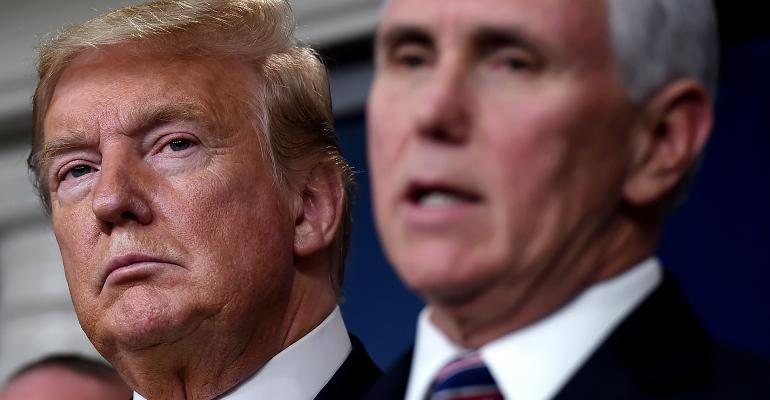(Bloomberg Opinion) -- Treasury yields have plunged to record lows as investors brace for the impact of the worldwide spread of the coronavirus. With interest rates low or negative around the world, and with central banks struggling to hit their inflation targets even before this evolving public-health shock, it's understandable that investors are ready for another prolonged bout of central-bank deflation fighting. But this ignores the possibility of a critical shift: A fiscal response by governments to offset the economic impact of the coronavirus represents a significant risk to buyers of bonds at these levels.
It's understandable that investors would play down those odds in the face of a scare like the one the world now is experiencing. For more than 30 years the main policy tool used to fight financial turmoil and economic downturns has been monetary policy. There's generally been good reason for this. The experience with high inflation in the 1970s was a formative event for policy makers for the next four decades, making them cautious about jacking up spending in response to a slowdown.
Until recently, there was also a lot of room for monetary policy to be effective. Interest rates before the financial crisis were high enough that the Federal Reserve could cut them by hundreds of basis points in response to economic shocks. Those lower interest rates generally led to more private-sector borrowing. The classic example of this might be how, after the Fed cut the federal funds rate from 6.5% to 1% between 2000 and 2003, mortgage borrowing surged, leading to a gain in growth in the technology, housing and financial industries.
Recently, monetary policy has been less effective. Stimulus efforts after the financial crisis led to a combination of zero interest rates, forward guidance in which the Fed pledged to hold rates low for a long time and central-bank purchases of Treasuries and mortgage-backed securities. These efforts helped stabilize the housing market and kept financial conditions loose, though much of the increase in corporate borrowing went to pay for share buybacks, supporting asset prices.
With interest rates as low as they are now, with even 30-year rates dropping below 1%, it's clear that there's much more opportunity to use fiscal stimulus to mitigate the negative economic effects. Although it's true that neither interest-rate cuts nor fiscal stimulus are equivalent to a cure or a vaccine, consider the potential impacts of one policy versus the other. With rate cuts you can help ease financial conditions, supporting corporate borrowing and the housing market. With fiscal stimulus you can put money in people's pockets that can go toward rent, a mortgage, a car payment or health-care expenses during a time of economic uncertainty and worker furloughs or layoffs.
How much fiscal stimulus is enough or too much? As an extreme example, consider the possibility of giving every worker in America $1,000 a month until the public-health crisis has passed. With almost 159 million employed people in the country, that would mean $159 billion of additional federal spending a month, or $1.9 trillion a year. Most of those payments would get spent, particularly by low-wage workers who spend most of what they make. Presumably, this would increase economic growth, inflation and interest rates -- all of which would be desirable right now.
But it might also blow up the portfolios of people who bought bonds last week. To which I'd say, so what? A policy shift from monetary to fiscal policy during times of financial turmoil is long overdue. It would have the added benefit of making monetary policy more effective by giving central banks more breathing room when it comes to fighting deflation and averting zero interest rates. If high inflation becomes a problem after too much fiscal stimulus, then undoing it would be relatively straightforward, by cutting back spending and increasing interest rates.
If there's any silver lining in this crisis it's that it's a great opportunity for fiscal policy makers to shoulder some of the burdens that central banks have been carrying for much of the past generation. And it's time for bond buyers to realize that there's two-sided risk to buying them in the midst of a panic.
To contact the author of this story:
Conor Sen at csen9@bloomberg.net
To contact the editor responsible for this story:
James Greiff at jgreiff@bloomberg.net





